%Geometry of sums of squares
%JSTeichR
%November 2022

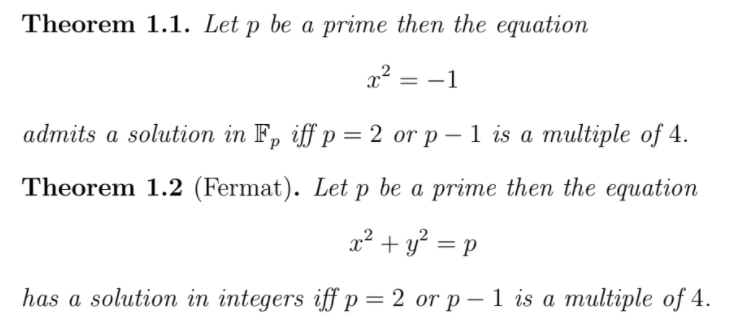
Markov numbers are integers that appear in triples which are solutions of
a Diophantine equation the so-called Markov cubic
150
Theorem
can be identified with the Teichmueller space of the punctured torus
using Penner's -lengths.
Odd index Fibonacci numbers are Markoff numbers
Markoff numbers

Frobenius uniqueness conjecture
- The largest integer in a triple determines the two other numbers.
- For every Markoff number there are exactly 3 simple closed geodesics of length on the modular torus
Partial results
m = Markoff number
If is a Markoff number which is prime
then there is a unique triple
- in
- in
- or is a multiple of 4.
Theorem 1.2
Let be a prime then
has a solution over
- iff or is a multiple of 4.
- Button's theorem follows from unicity of
Theorem 1.3
Let be a prime then
has a solution over
- iff or is a multiple of 6.
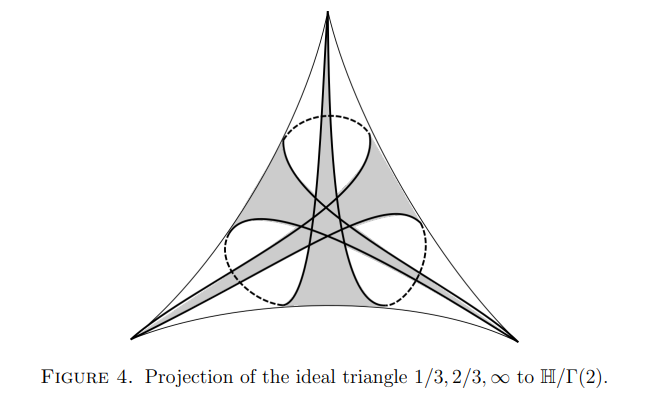
two groups of order 4
Acting on
Acting on
Farey tessalation
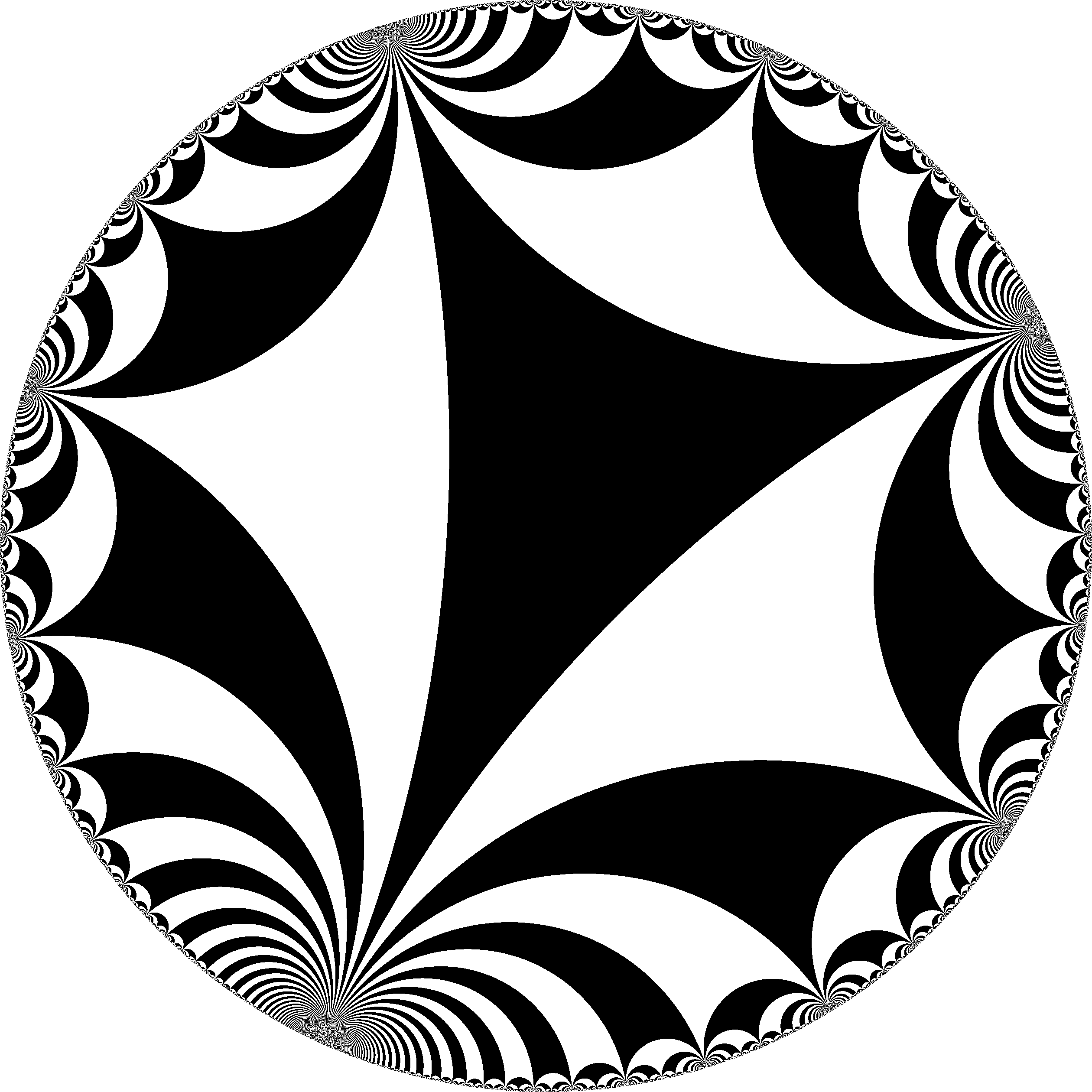
Ford circles
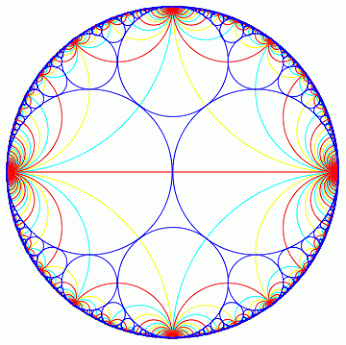
References etc
- Heath-Brown, Fermat’s two squares theorem. Invariant (1984)
- Zagier, A one-sentence proof that every prime p = 1 (mod 4) is a sum of two squares, 1990
- Elsholtz, Combinatorial Approach to Sums of Two Squares and Related Problems. (2010)
- Penner, The decorated Teichmueller space of punctured surfaces, Comm Math Phys (1987)
- Zagier text{target="_blank"}
Zagier

Let's begin then...
Burnside Lemma
Theorem 1.1
Let be a prime then
has a solution over
- iff or is a multiple of 4.
Proof
Group acting on :
Counting fixed points
Apply Burnside
QED
Theorem 1.2: sum of 2 squares
Acting on
Primitives
- infinitely many primitive elements
- primitive iff coprime
- transitive on primitives
Important
\begin{eqnarray*}
{ \textit{primitives} } &=& \mathbb{Q}\cup \infty\
&\subset& \text{circle/projective line } \
&=& \partial_\infty \mathbb{H}
\end{eqnarray*}
Farey tessalation
circle/projective line
- arc joining
- are Farey neighbors
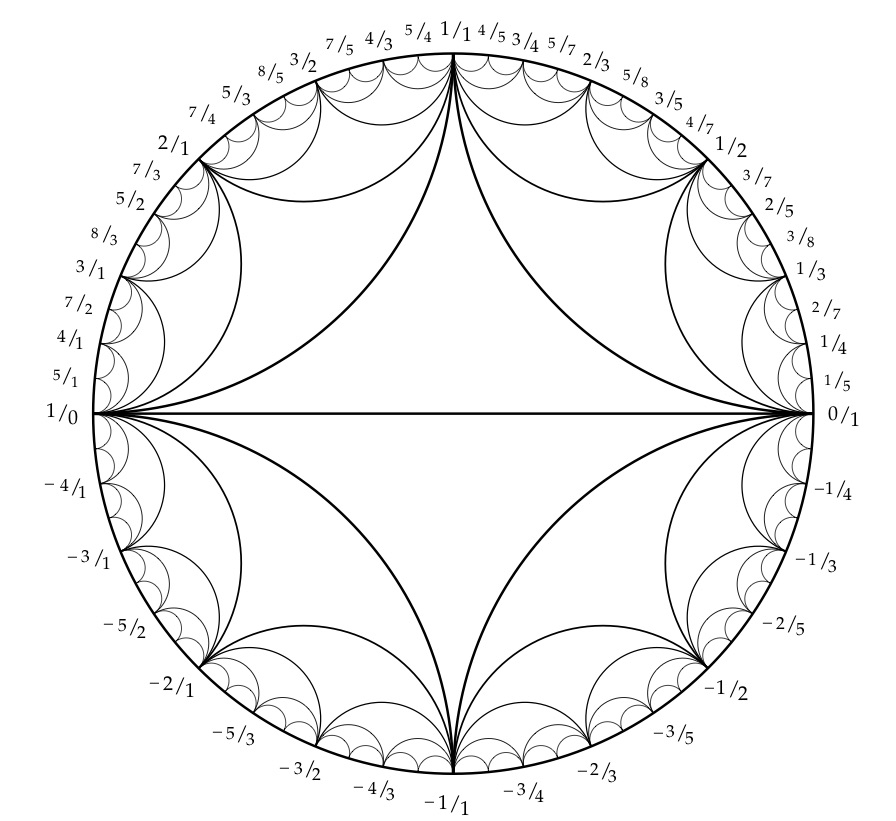
source
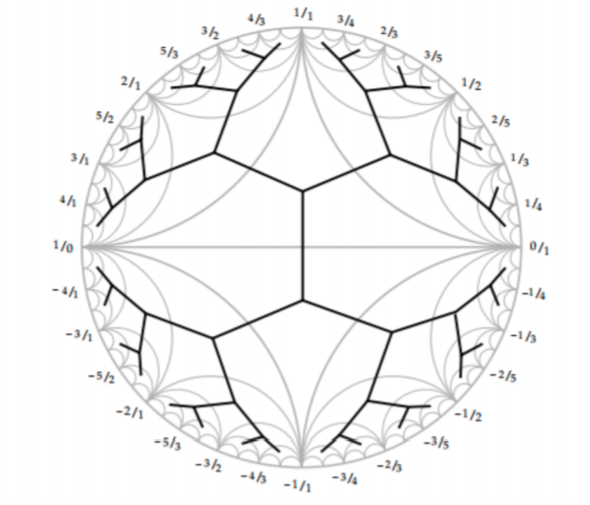
source
Definitions
- arc = Poincaré geodesic joining
- - length of arc
Lemma
-length = length of the portion outside Ford circles tangent to the real line at its endpoints
Ford circles

acts by Mobius transformations on
- preserves the Poincaré (hyperbolic) metric
- the orbit of are the Ford circles
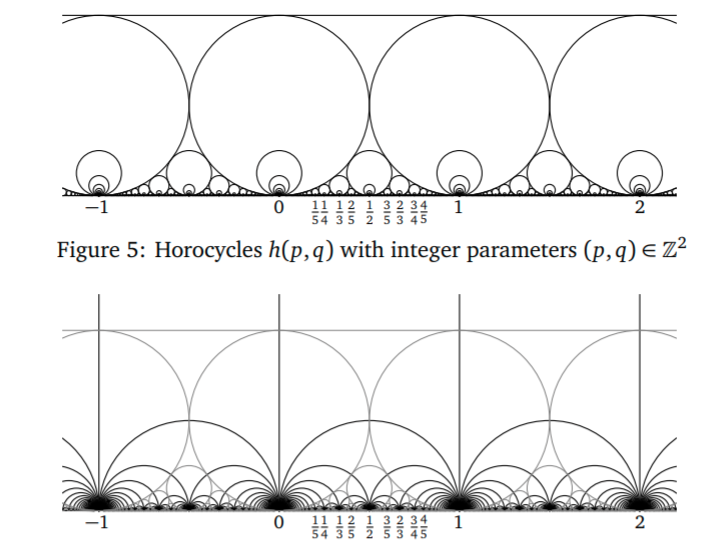
- point of tangency with , diameter =
- ie the diameter is the square of the inverse of the denominator of
Proof of lemma
- arc joining has -length
- -length = length of the portion outside Ford circles tangent to the real line at its endpoints
Proof of lemma
- transitive,
- can suppose and
- Ford circles tangent at
- and another of diameter
Groups and quotients
- has torsion so orbifold
- three punctured sphere
- once punctured torus
- For Aigner's conjectures the geometry of the
simple geodesics on
once punctured torus was important.
- For Fermat's theorem it's the automorphisms of
= three punctured sphere
A three punctured sphere
can be cut up into 2 ideal triangles.
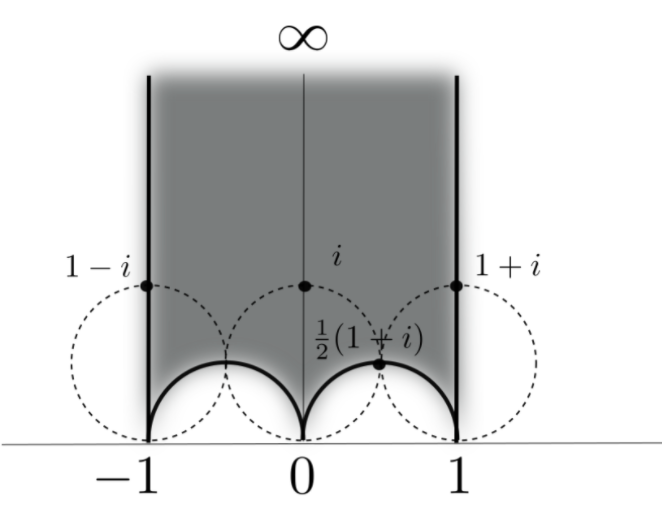

reciprocals of sums of squares
- are midpoints of arcs
- the lifts to of the midpoints
Lemma A
- Let be a positive integer.
- The number of ways of writing as a sum of squares with coprime integers
- is equal to the number of integers coprime to such that the line contains a point in the orbit of .
What is the group of automorphisms?

What is the subgroup of automorphisms
fixing the cusp labeled ?

- fixes the cusp and midpoint
- dashed arca are invariant under the group
- one arc has -length 1, the other 2.
the set
- arcs joining cusps with -length
- lift to vertical lines with endpoints with odd
- as before
Lemma A
Let be a positive integer.
The number of ways of writing as a sum of squares
with coprime integers is equal to the number of integers
coprime to
such that the line
contains a point in the orbit of .
subgroup lifts to
automorphisms
- induces an automorphism no fixed points in
- is an inversion in a half circle with endpoints -1 and 1
- this arc's projection to surface is simple arc of -length
Lemma B
The automorphism induced by
fixes two and exactly two arcs in .
- apply Burnside Lemma to prove Theorem 1.2
Proof
- If and are exchanged by an inversion swapping Ford circles
- Then the endpoints of the fixed circle are and
- if the arc joining these points has -length =
If is a Markoff number which is prime
then there is a unique triple
- Button's theorem follows from unicity in
- unique vertical geodesic in Lemma A.
- let's look at that again
- Number of ways of writing as a sum of squares with coprime integers
- = number of integers coprime to such that the line contains a point in the orbit of .
- For every Markoff number there are exactly 6 simple closed geodesics of length on the modular torus
- exactly 6 simple arcs of -length on
.svg)
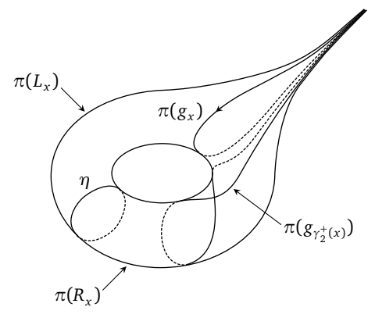
pair of disjoint simple closed and arc geodesics
Theorem
can be identified with the Teichmueller space of the punctured torus.
!
exactly 6 simple arcs of -length on
The End